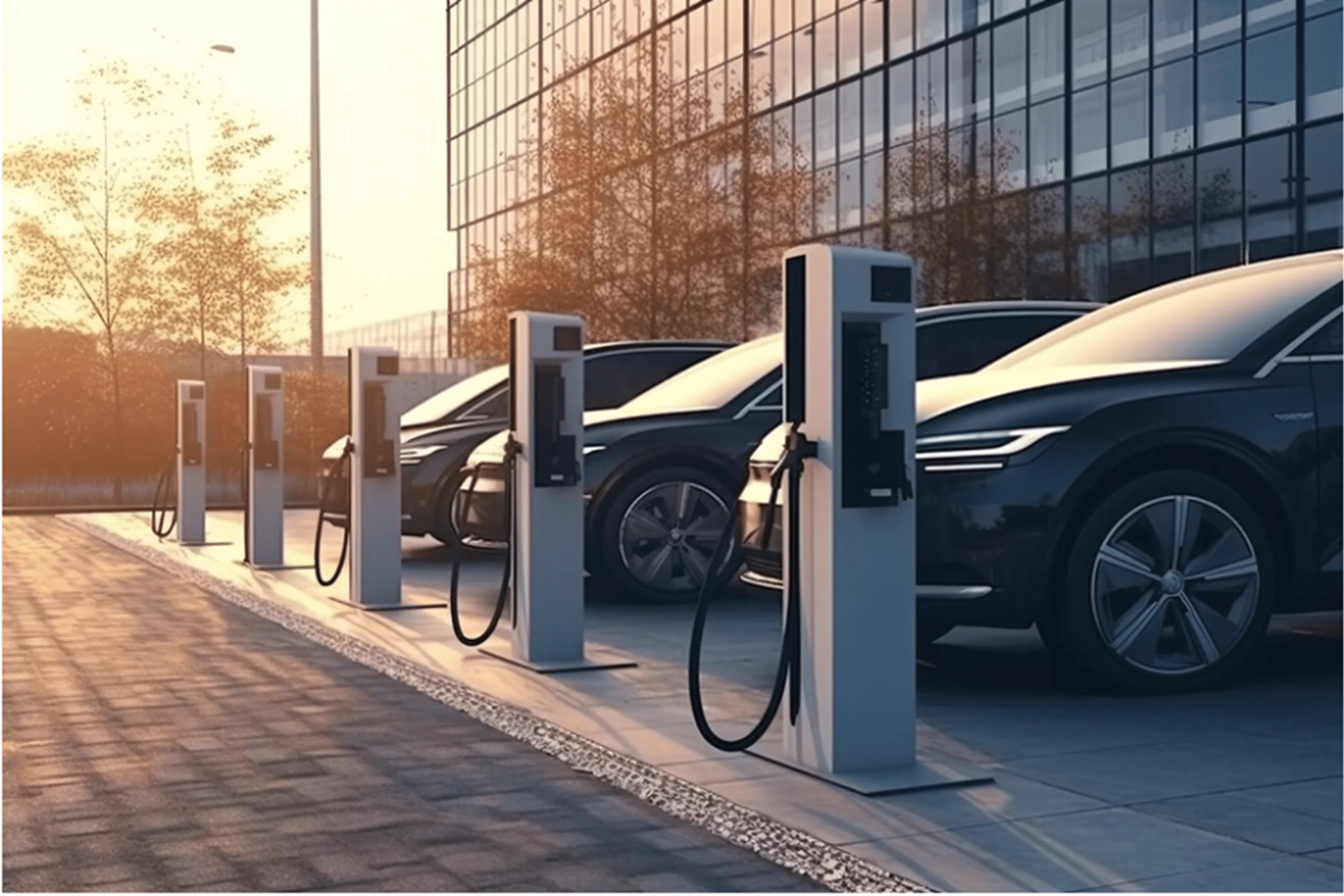Charging Ahead: Global Trends in EV Charging Infrastructure and Lessons for the Industry
April 24, 2024

In an era where sustainability is at the forefront of global conversations, the shift towards electric vehicles (EVs) has emerged as a pivotal solution to reduce carbon emissions and combat climate change.
EVs have gained significant traction in recent years, with governments, automakers, and consumers alike embracing the transition to cleaner energy alternatives. However, the widespread adoption of EVs hinges not only on advancements in vehicle technology but also on the development of robust charging infrastructure.
The global landscape of EV charging infrastructure is evolving rapidly, driven by technological innovation, government incentives, and market demand. Understanding the trends shaping this landscape can provide valuable insights for stakeholders in the infrastructure industry seeking to capitalize on the opportunities presented by the electrification revolution.
Expansion of Charging Networks: One of the most notable trends in EV charging infrastructure is the rise of charging networks across regions. Companies like Tesla, ChargePoint, FLO, and EVgo have been instrumental in deploying charging stations at strategic locations, including highways, urban centers, recreational and commercial areas. This expansion is essential for alleviating range anxiety among EV drivers and facilitating long-distance travel, thus accelerating the transition to electric mobility.
Diversification of Charging Solutions: The demand for EV charging solutions is driving innovation in technology and business models. In addition to traditional public charging stations, there is a growing emphasis on home charging solutions, workplace charging, and fast-charging networks. Furthermore, wireless charging technologies are gaining traction, offering greater convenience and ease of use for EV owners.
Environmental Impact: One of the most significant advantages of electric vehicle charging stations is their role in reducing greenhouse gas emissions. Unlike conventional internal combustion engine vehicles, EVs produce zero tailpipe emissions, leading to cleaner air and mitigating the harmful effects of pollutants on public health.
Integration with Renewable Energy: Many industry leaders are recognizing the synergy between EVs and renewable energy sources. By integrating EV charging infrastructure with solar, wind, or other renewable energy systems, it is possible to further reduce the carbon footprint of electric transportation while promoting energy independence and resilience.
Smart Charging and Grid Integration: Smart charging solutions are emerging as a key component of EV infrastructure, enabling dynamic load management, demand response, and grid integration. By leveraging advanced software algorithms and smart technologies, smart charging systems optimize energy usage, reduce peak demand, and lower operating costs for both EV owners and utilities.
Technological Advancements: Another crucial factor is the efficiency of the charging process. Rapid advancements in battery technology such as solid-state batteries and ultra-fast charging capabilities, have enhanced the performance and range of electric vehicles, alleviating concerns about their practicality and convenience.
Standardization and Compatibility: The lack of standardization has been a significant challenge in the EV charging ecosystem, hindering seamless integration and compatibility between different charging networks and EV models. Efforts to establish common standards for connectors, communication protocols, and payment systems are crucial for fostering a cohesive and user-friendly charging experience.
Policy Support and Incentives: Government policies play a pivotal role in driving the deployment of EV charging infrastructure. Subsidies, tax incentives, regulatory mandates, and infrastructure investments can incentivize private sector participation and accelerate the build-out of charging networks. Moreover, initiatives such as zero-emission zones and emissions regulations are shaping market dynamics and driving demand for electric vehicles and associated infrastructure.
Economic Opportunities: The increase of electric vehicle charging stations presents substantial economic opportunities across various sectors. From job creation in engineering, manufacturing, installation, and maintenance to the expansion of businesses in the electric vehicle supply chain, the EV industry stimulates economic growth and innovation.
Partnerships and Collaboration: Collaboration among stakeholders is essential for overcoming the complex challenges associated with EV charging infrastructure. Public-private partnerships, industry consortia, and cross-sector collaborations can leverage expertise, resources, and networks to accelerate deployment, address interoperability issues, and ensure the scalability and sustainability of charging infrastructure.
Challenges and Opportunities
While the expansion of EV charging infrastructure presents immense opportunities for urban transformation, it also brings forth a unique set of challenges. Limited space, regulatory hurdles, and the need for significant investment are just some of the obstacles cities must navigate. However, these challenges also represent opportunities for innovation and collaboration. Public-private partnerships, streamlined permitting processes, and creative urban planning strategies can help overcome barriers and accelerate the transition towards electrified urban landscapes.
The Road Ahead
As we look to the future, the electrification of transportation will continue to shape the way we design, build, and inhabit our cities. From the integration of smart technologies to the development of autonomous charging solutions, the evolution of EV charging infrastructure will be driven by innovation and sustainability.
Continued collaboration between engineers, designers, policymakers, and industry stakeholders will be critical in addressing these challenges and accelerating the transition to a sustainable transportation future powered by electric vehicles. By harnessing the power of innovative engineering and design, and investing in charging infrastructure, policymakers, businesses, and communities, we can support the widespread adoption of electric vehicles, reduce greenhouse gas emissions, and mitigate the impacts of climate change.
As the world charges ahead toward a zero-emission future, the electrification of transportation will continue to be a transformative force, with EV charging infrastructure serving as the backbone of this revolution.
Celebrate innovation and unlock new possibilities with TWD.